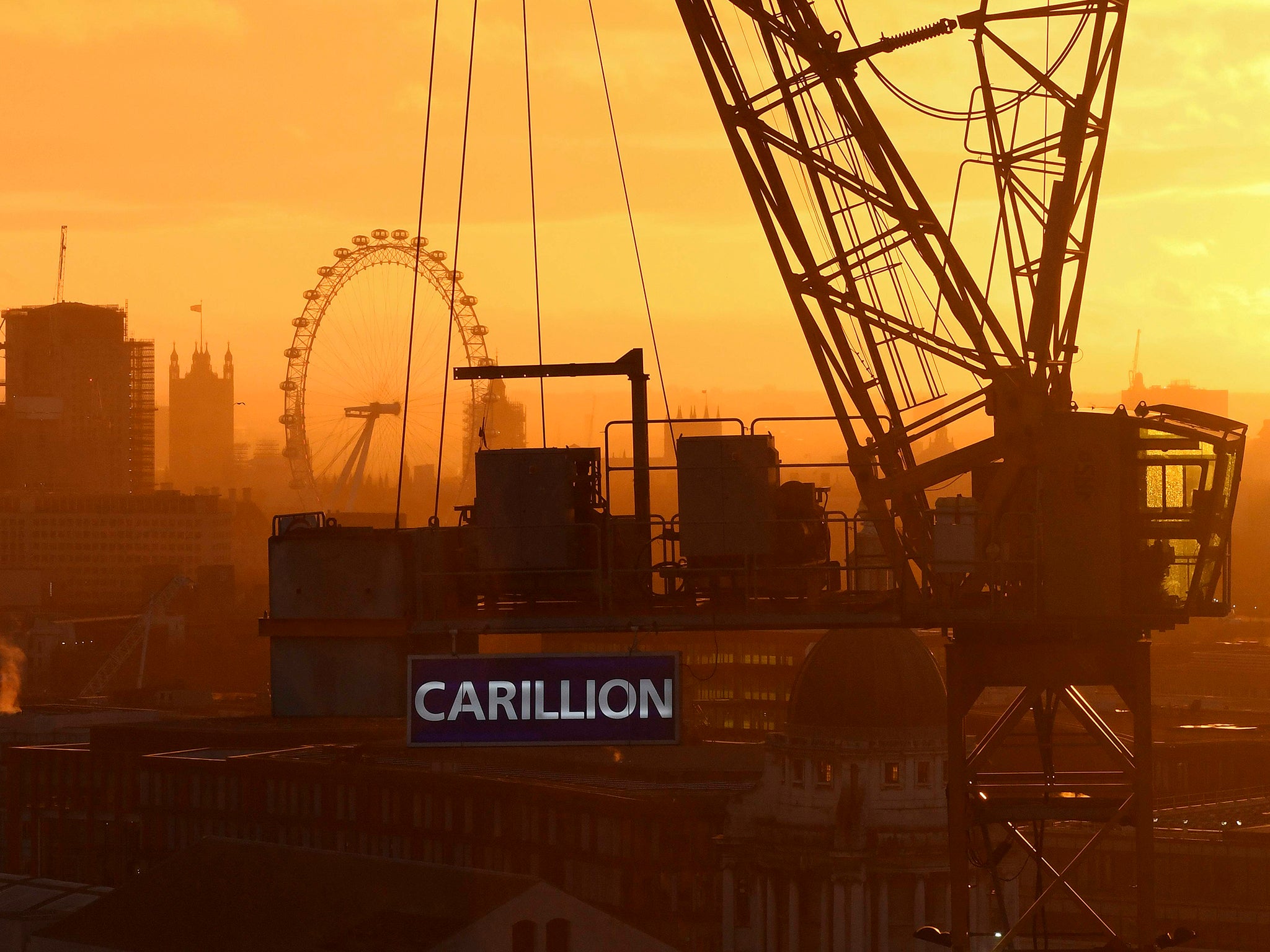Carillion's spectacular collapse highlights dangers of trusting gut instincts in stock market investment
Here's our guide to NOT investing in a failing giant

Carillion. If you hadn’t heard the name before this week, the chances are you have now.
The construction giant’s facade crumbled in the early hours of Monday morning, shaking the industry to its core, affecting the lives of thousands of employees and suppliers, and even testing the stability of the government thanks to one question.
How, with huge state contracts around the world, an incredibly wide range of services, and a history of swallowing up household names, could it have failed so fundamentally?
With the news that at least one other big UK construction firm is now under close scrutiny, it’s time for investors to take heed of some timely warnings.
“No company is too big to fail,” warns Angus Dent, CEO of peer-to-peer lending platform ArchOver, who says that more than 51 per cent of investors pick companies based on gut instinct.
“When it comes to investing, there is a very real danger that people are underestimating the risks involved. It’s important not just to trust reputations. Look at the company’s recurring revenues and balance sheet to make an informed decision on whether you’re likely to get your money back.
He warns would-be shareholders to do proper due diligence as well as considering additional security such as credit insurance.
“The key thing to remember is that a business’s size has no real bearing on how big an investment risk it is. Do your research, get a clear understanding of the risks involved and only commit your money when you’ve got a good level of assurance.”
So before you commit your hard-earned cash to those sturdy looking leviathans, where should you go looking for cracks?
Beware complexity
“It is hard to find what operational synergy or overlap in expertise can be found between providing school meals, maintaining prisons, building hospitals or arranging project finance, yet Carillion did them all and it did so in several geographies, not just one,” notes Russ Mould, investment director at AJ Bell.
“The very best long-term investments develop a competitive edge – via a technological lead, a brand or market share, for example – and then deepen their core competence. Carillion was juggling complex, long-term contracts across a range of disciplines and geographies, a feat which ultimately proved beyond it, especially once a small number of big projects went wrong.”
Meanwhile, Carillion’s merger and acquisition (M&A) history is impressive reading, with takeovers including Mowlem in 2006, Alfred McAlpine in 2008 and even a “failed lunge” for Balfour Beatty as recently as 2014.
The deals expanded the company’s range and reach, but acquiring and merging businesses takes out cash and adds in even more complexity.
Deadly debt
“Debt in its own right is not inherently bad as it can be a cheap and ready source of funding,” adds Mould.
“However, the company’s business model must be suitable – and that means demand must be fairly predictable and margins consistent (and preferably fairly high) so that the interest can be paid without difficulty and interest cover is good.”
Utilities and tobacco stocks, for example, can take on a lot of debt fairly comfortably. Tech stocks tend to avoid it. They need to keep investing in research so their fixed costs are high. Construction firms tend to avoid debt, too, to ensure they have a nice cash buffer in case a big project goes wrong and they are hit by cost over-runs.
“Carillion did not take this precaution and it was further hobbled by a huge pension deficit with disastrous consequences. In 2016, it generated a stated operating profit of £146m on sales of £4.4bn for a margin of just 3.3 per cent,” notes Mould.
Even that slim margin had to cover interest, pension payments, tax and around £80m in dividends.
Where’s the cash?
Too many investors look at the profit and loss account and nothing else, forgetting the old market maxim that “Profit is a matter of opinion, cash is a fact.” Profits may drive short-term sentiment but it is cash that pays the bills such as salaries, interest and tax, so investors must always look at the balance sheet first, the cash flow statement second and the profit and loss account third.
“The first will explain how safe (or otherwise) the firm is,” Mould explains. “The second can show if there are any problems, accounting issues or issues of earnings quality to address. And the third will provide a short-term snapshot of trading.”
At last year’s share price high of 238p, Carillion was offering a dividend yield of 7.7 per cent which invariably lured income-seekers to their doom. The dividend was soon cut to zero as profit warnings came in thick and fast and the share price collapsed.
“Investors should consider how much risk they are taking if a company is offering such a yield,” concludes Mould. “Such optically fat payouts can be the market’s polite way of saying it does not believe the earnings forecast, the dividend forecast or both.”
Subscribe to Independent Premium to bookmark this article
Want to bookmark your favourite articles and stories to read or reference later? Start your Independent Premium subscription today.

Join our commenting forum
Join thought-provoking conversations, follow other Independent readers and see their replies